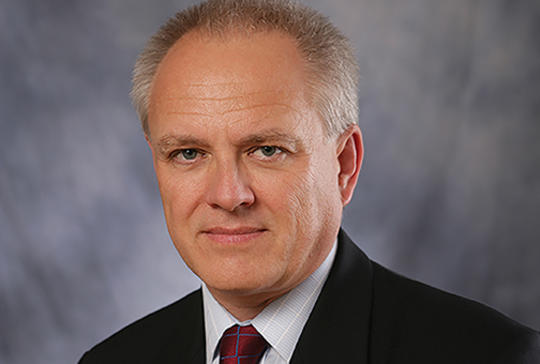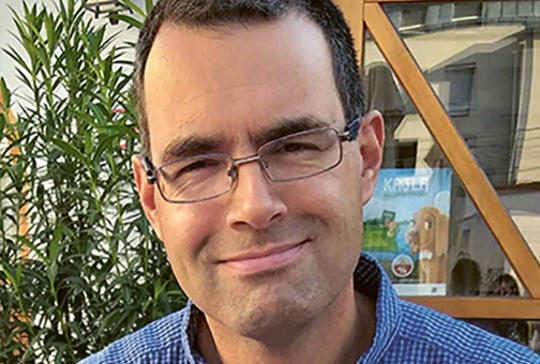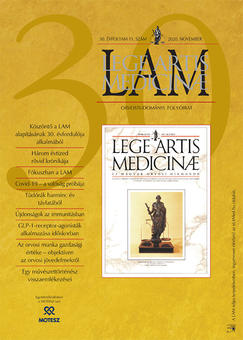The eLitMed.hu medical portal uses computer cookies for convenient operation. Detailed information can be found in the Cookie-policy.
Lege Artis Medicinae - 2020;30(11)
Content
[A short chronicle of three decades ]
[Hungarian professional periodicals started quite late in European context. Their publishing, editing and editorial philosophy were equally influenced by specific historical and political situations. Certain breaking points of history resulted in termination of professional journals (War of Independence 1848-1849, First and Second World Wars), however there were periods, which instigated the progress of sciences and founding of new scientific journals. Both trends were apparent in years after the fall of former Hungarian regime in 1990. The structure of book and journal publishing has changed substantially, some publishers fell “victim” others started successfully as well. The latters include the then-established publishing house Literatura Medica and its own scientific journal, Lege Artis Medicinae (according to its subtitle: New Hungarian Medical Herald) issued first in 1990. Its appearance enhanced significantly the medical press market. Its scientific publications compete with articles of the well-established domestic medical journals however its philosophy set brand-new trends on the market. Concerning the medical community, it takes on its problems and provides a forum for them. These problems are emerging questions in health care, economy and prevention, in close interrelation with system of public health institutions, infrastructure and situation of those providing individual health services. In all of them, Lege Artis Medicinae follows consequently the ideas of traditional social medicine.]
[Some newly discovered mechanisms of action of the immune response and the conceptual transformation of immunology]
[Immunology is a complex science studying healthy and abnormal immune responses. This discipline of physiology and pathophysiology primarily understands the individual mechanisms through a cellular and molecular biological, genetic, epigenetic and (neuro) endocrinological approach, as well as by exploring the details of pathological processes. Immunology is one of the very rapidly evolving sciences, and its results have repercussions on other disciplines at both theoretical (eg network sciences, systems biology) and methodological (monoclonal antibodies, biomarkers, immune assays) levels. In recent decades, a number of conceptual novelty have been uncovered and immunologists have recognized essential details in their assertion in immunity. ]
[Lung cancer – a review of thirty years. Thoughts about the past struggles, the present results and promises of the future]
[In the past thirty years there was a huge development in the complex treatment of lung cancer. This development is due mostly to the last decade. Nihilism of lung cancer treatment is over and it is a reality that even patients in advanced stage turn out curable by appropriate therapy and their condition may be changed for a chronic disease while using anti-tumour therapy. Thirty years ago, the realistic life expectancy of six to eight months in advanced stage mounted nowadays significantly, and may surpass even five years in a number of cases. It required adequate diagnostic background, which provided the biomarker based treatment. In early stage surgical resection has a fundamental role, coupled with modern complex neoadjuvant and adjuvant treatment, while new surgical techniques also contributed to the improvement of therapeutic results. The same is true for radiation therapy. The same complex strategy is prevailing also in pharmaceutical options, which are dominated by modalities of cytotoxic chemotherapies and targeted immunotherapies. Multidisciplinary teams play a significant role in strategic decisions of lung cancer treatment. The future ways are indicating repeated innovations of targeted therapies and extended indications of immunotherapy in terms of precision medicine. However, we must keep in mind also the primary and secondary prevention with effective smoking cessation programs and low-dose chest CT screening applied as usual soon in the risk groups. ]
[GLP-1 receptor agonists in the elderly]
[According to current guidelines of type 2 diabetes, treatment, glucagon-like peptide (GLP) -1 receptor agonists (RAs) are primary suggested drugs of the early antidiabetic medication, just after the first antidiabetic metformin. However, more and more arguments support their optional application in old age diabetes. These include multi-target strong glycemic effects, low risk of hypoglycaemia, proven cardio- and nephroprotective nature of long- and ultra long-acting derivatives, multifaceted beneficial pleiotropic effects, as well as the appearence of their fixed combinations with analogue basal insulins effective in weight loss and lowering the blood pressure. This study reviews specific aspects of blood sugar lowering treatment in the elderly and the potential benefits of choosing GLP-1 RAs in this age group. While presenting data of relevant literature and own experiences it is emphasized, that these preparations can be used safely in long term also in this age group.]
[Second game, 37th move and Fourth game 78th move]
[What has Go to do with making clinical decisions? One of the greatest intellectual challenges of bedside medicine is making decisions under uncertainty. Besides the psychological traps of traditionally intuitive and heuristic medical decision making, lack of information, scarce resources and characteristics of doctor-patient relationship contribute equally to this uncertainty. Formal, mathematical model based analysis of decisions used widely in developing clinical guidelines and in health technology assessment provides a good tool in theoretical terms to avoid pitfalls of intuitive decision making. Nevertheless it can be hardly used in individual situations and most physicians dislike it as well. This method, however, has its own limitations, especially while tailoring individual decisions, under inclusion of potential lack of input data used for calculations, or its large imprecision, and the low capability of the current mathematical models to represent the full complexity and variability of processes in complex systems. Nevertheless, clinical decision support systems can be helpful in the individual decision making of physicians if they are well integrated in the health information systems, and do not break down the physicians’ autonomy of making decisions. Classical decision support systems are knowledge based and rely on system of rules and problem specific algorithms. They are utilized widely from health administration to image processing. The current information revolution created the so-called artificial intelligence by machine learning methods, i.e. machines can learn indeed. This new generation of artificial intelligence is not based on particular system of rules but on neuronal networks teaching themselves by huge databases and general learning algorithms. This type of artificial intelligence outperforms humans already in certain fields like chess, Go, or aerial combat. Its development is full of challenges and threats, while it presents a technological breakthrough, which cannot be stopped and will transform our world. Its development and application has already started also in the healthcare. Health professionals must participate in this development to steer it into the right direction. Lee Sedol, 18-times Go world champion retired three years after his historical defeat from AlphaGo artificial intelligence, because “Even if I become the No. 1, there is an entity that cannot be defeated”. It is our great luck that we do not need to compete or defeat it, we must ensure instead that it would be safe and trustworthy, and in collaboration with humans this entity would make healthcare more effective and efficient. ]
[Economic features of rewarding physicians – changing for fair incomes in Hungary ]
[Since ages, rewarding physicians was a crucial problem. Among true professionals (priests, legal experts, physicians and teachers) only medical doctors are necessarily working in physical terms, which generates permanent uncertainty about their remuneration. Old Age manual services (surgery, obstetrics) were paid by artisans’ standards while patients of faith-healing (by priest-doctors) presented religious offers according to their capacities. Hippocrates’ business ethics transformed this pattern as price elasticity for profane providers. During the Medieval Ages, governments issued also for physicians fee schedules or in some countries like Hungary they agreed free on remuneration with their patients. Thus, Hungary’s physicians experienced 1891 the implementation of the Bismarck type social health insurance as a real shock-wave generated by the depressed fee proposals. After the first hit, during the following 100 years Hungary committed all possible financial failures down to the fall of Communism in 1989. After the age (1949–1989) of socialism in the health care, general practitioners returned to the self-employed business however under heavy custody of a single payer public financing. Specialist in out and in-patient care (if they used this opportunity) were “licenced” for earning money on the quasi private market of the under-the-table informal business. Actually, only the private dentistry preserved its legal free market share and by the cross-border “dental-tourism” Hungary joined also the competitive international dental market. All other specialists demonstrate income discontent by requiring higher wages, working abroad or fuelling debates on accepting informal payments of “thankful” patients. Contrasted to dentistry, there are actually no economic standards to ponder physicians’ income expectations and compare them with purchasing power of public and private financing. This study shows first the historic evidence of the relevant golden standard and its continuity un-der the present circumstances however supressed for political reasons. It would be able to settle debates about the public employees’ wages of doctors caught out of the thin air. ]
[Focus on Lege Artis Medicinae (LAM)]
[Three decades ago, LAM was launched with the goal of providing scientific information about medicine and its frontiers. From the very beginning, LAM has also concerned a special subject area while connecting medicine with the world of art. In the palette of medical articles, it remained a special feature to this day. The analysis of the history of LAM to date was performed using internationally accepted publication guidelines and scientific databases as a pledge of objectivity. We examined the practice of LAM if it meets the main criteria, the professional expectations of our days, when publishing contents of the traditional printed edition and its electronic version. We explored the visibility of articles in the largest bibliographic and scientific metric databases, and reviewed the LAM's place among the Hungarian professional journals. Our results show that in recent years LAM has gained international reputation despite publishing in Hungarian spoken by a few people. This is due to articles with foreign co-authors as well as references to LAM in articles written exclusively by foreign researchers. The journal is of course full readable in the Hungarian bibliographic databases, and its popularity is among the leading ones. The great virtue of the journal is the wide spectrum of the authors' affiliation, with which they cover almost completely the Hungarian health care institutional system. The special feature of its columns is enhanced by the publication of writings on art, which may increase Hungarian and foreign interest like that of medical articles.]
1.
Clinical Neuroscience
Is there any difference in mortality rates of atrial fibrillation detected before or after ischemic stroke?2.
Clinical Neuroscience
Factors influencing the level of stigma in Parkinson’s disease in western Turkey3.
Clinical Neuroscience
Neuropathic pain and mood disorders in earthquake survivors with peripheral nerve injuries4.
Journal of Nursing Theory and Practice
[Correlations of Sarcopenia, Frailty, Falls and Social Isolation – A Literature Review in the Light of Swedish Statistics]5.
Clinical Neuroscience
[Comparison of pain intensity measurements among patients with low-back pain]1.
Clinical Neuroscience Proceedings
[A Magyar Stroke Társaság XVIII. Kongresszusa és a Magyar Neuroszonológiai Társaság XV. Konferenciája. Absztraktfüzet]2.
3.
Journal of Nursing Theory and Practice
[A selection of the entries submitted to the literary contest "Honorable mission: the joys and challenges of our profession" ]4.
Journal of Nursing Theory and Practice
[End of Life and Palliative Care of Newborns in the Nursing Context]5.
Journal of Nursing Theory and Practice
[Aspects of Occupational Health Nursing for Incurable Patients ]











